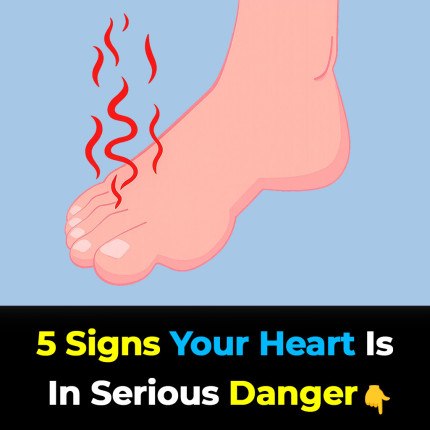
5 Silent Warning Signs Your Heart Is in Serious Danger
Paying attention to small physical changes-whether it’s a crease in your earlobe, unusual hair loss, or a faint ring in your eyes-can offer life-saving clues.
Your body often sends out warning signals long before a serious health issue develops-but the challenge is recognizing them. When it comes to your heart, spotting these hidden red flags early could be the difference between prevention and long-term complications.
Below are five surprising and visible signs that could suggest an underlying heart problem. By paying attention to these symptoms and acting promptly, you can take powerful steps toward protecting your cardiovascular health.
One of the most fascinating and lesser-known warning signs is a diagonal crease on the carlobe, medically referred to as Frank’s Sign. This line runs from the top corner to the bottom of the lobe and has been linked in multiple studies to blockages in the coronary arteries.
Research indicates that people with this crease may face a significantly higher risk of arterial obstruction. In fact, some studies suggest that up to 70% of individuals with this mark may already have cardiovascular narrowing. While not everyone with the crease will develop heart disease, the risk is too important to ignore especially if the mark appears before age 40. A consultation with a healthcare professional is strongly recommended.
Hair Loss on the Legs
Unexpected hair loss on your legs isn’t always a cosmetic concern-it can be a sign of peripheral arterial disease (PAD). This condition develops when fatty deposits restrict blood flow to the lower limbs, starving hair follicles of the oxygen and nutrients they need to grow.
Hair thinning or sudden patches of loss, particularly when paired with other symptoms like calf pain, cold feet, or slow-healing wounds, may point toward circulation issues. Since PAD can raise the risk of more serious heart complications, anyone experiencing these symptoms should schedule a vascular health check as soon as possible.
Xanthelasma
If you notice soft, yellowish deposits around your eyelids, you may be looking at xanthelasma. These cholesterol-filled patches often appear near the inner corners of the upper eyelids and are strongly linked to high cholesterol levels, one of the biggest risk factors for heart disease. Though harmless in themselves, xanthelasmas are essentially your body’s way of waving a red flag about lipid imbalance. Early medical evaluation and proper cholesterol management can drastically cut the chances of heart complications later in life.
Senile Arc (Arcus Senilis)
A pale gray or white ring around the outer edge of the cornea, known as Arcus Senilis, is common in older adults. However, spotting this feature at a young age may signal severe dyslipidemia, an imbalance in blood fats that accelerates the risk of cardiovascular disease.
If you notice this arc developing in your eyes before middle age, it’s crucial to request a cholesterol test and a full cardiovascular assessment. Detecting and treating abnormal lipid levels early can protect your heart from long-term damage.
Cutaneous Cyanosis (Bluish Skin Discoloration)
When the skin, lips, or fingertips take on a bluish or purplish tone, the condition is called cyanosis a visible sign of low oxygen in the blood. This can be associated with both heart and lung issues, making it a symptom that should never be ignored.
There are two types:
Central cyanosis affects the lips and tongue, often linked to major
cardiovascular or pulmonary conditions.
Peripheral cyanosis affects extremities such as fingers and toes,
usually tied to poor circulation.
Persistent cyanosis requires immediate medical evaluation. Ignoring it could allow serious heart conditions to progress unnoticed.
Final Thoughts
Your heart communicates in subtle but powerful ways. Paying attention to small physical changes whether it’s a crease in your carlobe, unusual hair loss, or a faint ring in your eyes can offer life-saving dues.
If you notice any of these signs, don’t delay Consult a healthcare professional, schedule regular checkups, eat a balanced diet, stay active, and manage stress. Taking these proactive steps today can make all the difference in safeguarding your heart tomorrow




